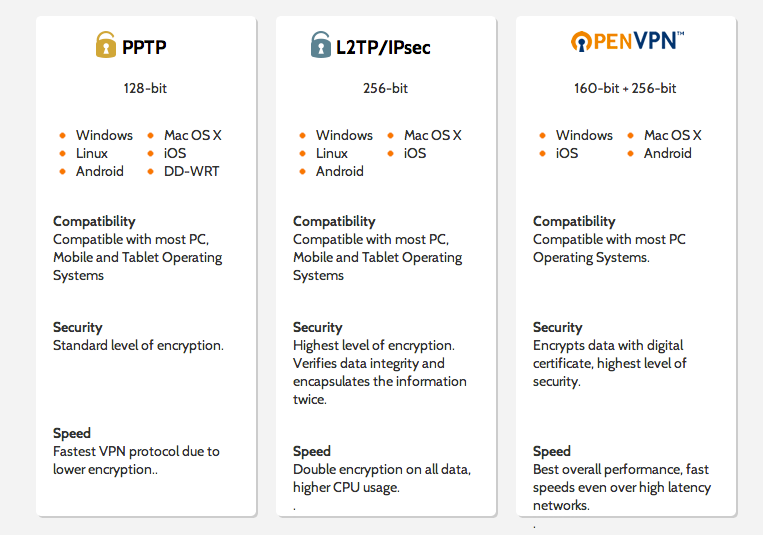精彩评论
- 张麻子是杂种(5天前)
从有人以来就没有比张麻子更邪恶 张口闭口为人民,害死几千万人还为人民,为自己的皇位还差不多,...
评:深度解析《让子弹飞》 al2359(3年前 (2023-02-06))
求科学离线插件,谢谢!34401355@qq.com
评:改版梅林固件安装SS【shadowsocks】科学上网插件教程al2359(3年前 (2023-02-06))
求科学离线插件,谢谢!!!
评:改版梅林固件安装SS【shadowsocks】科学上网插件教程
在百度搜索了很多关于CentOS7搭建VPN的教程,但是有很多走不完全套的,因此浪费了很多时间,在这里我把查到能走通的教程整理了一遍,分享给大家。
整个安装过程不用经过编译,组件都是在yum中下载,首先我们更新一下所有组件:

PHP
|
1
|
yum update -y
|
这里有个地方需要注意的是:有些主机的硬件并不支持最新内核,因此在不确定的情况下就不要升级内核了,用以下的命令:
PHP
|
1
|
yum –exclude=kernel* update -y
|
更新需要较长时间,请耐心等待。
撰写这篇文章并且共享出来,主要是为了能和大家互相学习和交流,但是正在看这篇文章的不乏一些现在就有自己的服务器或VPS,急着马上搭建好一台自己的VPN服务器的同学,如果你是这类同学,请不用心急,因为我制作好了自动运行脚本,脚本的内容和文章内容是一样的,把脚本下载到服务器,运行并配置自己的账号密码、ip和客户端ip即可。
脚本下载地址:https://github.com/BoizZ/PPTP-L2TP-IPSec-VPN-auto-installation-script-for-CentOS-7
运行脚本: sh vpn-script-for-centos7.sh
好,那么希望继续学习的同学请往下看。
为什么要安装epel源呢?是因为必要组件xl2tpd在基础的yum源里面是没有的。
PHP
|
1
|
yum install epel-release -y
|
安装完epel源以后就可以直接安装依赖组件了。
PHP
|
1
|
yum install -y openswan ppp pptpd xl2tpd wget
|
需要等待所有依赖组件安装完成才能执行以下步骤(小标题括号内是文件路径)。

PHP
|
1
2
3
4
5
6
7
8
9
10
11
12
13
14
15
16
17
18
19
20
21
22
23
24
25
26
27
28
29
30
31
32
33
34
35
36
37
38
39
40
41
42
43
44
45
46
47
|
# /etc/ipsec.conf - Libreswan IPsec configuration file
# This file: /etc/ipsec.conf
#
# Enable when using this configuration file with openswan instead of libreswan
#version 2
#
# Manual: ipsec.conf.5
# basic configuration
config setup
# NAT-TRAVERSAL support, see README.NAT-Traversal
nat_traversal=yes
# exclude networks used on server side by adding %v4:!a.b.c.0/24
virtual_private=%v4:10.0.0.0/8,%v4:192.168.0.0/16,%v4:172.16.0.0/12
# OE is now off by default. Uncomment and change to on, to enable.
oe=off
# which IPsec stack to use. auto will try netkey, then klips then mast
protostack=netkey
force_keepalive=yes
keep_alive=1800
conn L2TP-PSK-NAT
rightsubnet=vhost:%priv
also=L2TP-PSK-noNAT
conn L2TP-PSK-noNAT
authby=secret
pfs=no
auto=add
keyingtries=3
rekey=no
ikelifetime=8h
keylife=1h
type=transport
left=$serverip
leftid=$serverip
leftprotoport=17/1701
right=%any
rightprotoport=17/%any
dpddelay=40
dpdtimeout=130
dpdaction=clear
# For example connections, see your distribution's documentation directory,
# or the documentation which could be located at
# /usr/share/docs/libreswan-3.*/ or look at https://www.libreswan.org/
#
# There is also a lot of information in the manual page, "man ipsec.conf"
# You may put your configuration (.conf) file in the "/etc/ipsec.d/" directory
# by uncommenting this line
#include /etc/ipsec.d/*.conf
|
PHP
|
1
2
|
#include /etc/ipsec.d/*.secrets
$serverip username PSK password
|
注解:第二行中username为登录名,password为登录密码
PHP
|
1
2
3
4
5
6
7
8
9
10
11
12
|
#ppp /usr/sbin/pppd
option /etc/ppp/options.pptpd
#debug
# stimeout 10
#noipparam
logwtmp
#vrf test
#bcrelay eth1
#delegate
#connections 100
localip 10.0.1.2
remoteip 10.0.1.200-254
|
PHP
|
1
2
3
4
5
6
7
8
9
10
11
12
13
14
15
16
17
18
19
20
21
22
23
24
25
26
27
28
29
30
|
;
; This is a minimal sample xl2tpd configuration file for use
; with L2TP over IPsec.
;
; The idea is to provide an L2TP daemon to which remote Windows L2TP/IPsec
; clients connect. In this example, the internal (protected) network
; is 192.168.1.0/24. A special IP range within this network is reserved
; for the remote clients: 192.168.1.128/25
; (i.e. 192.168.1.128 ... 192.168.1.254)
;
; The listen-addr parameter can be used if you want to bind the L2TP daemon
; to a specific IP address instead of to all interfaces. For instance,
; you could bind it to the interface of the internal LAN (e.g. 192.168.1.98
; in the example below). Yet another IP address (local ip, e.g. 192.168.1.99)
; will be used by xl2tpd as its address on pppX interfaces.
[global]
; ipsec saref = yes
listen-addr = 104.171.165.91
auth file = /etc/ppp/chap-secrets
port = 1701
[lns default]
ip range = 10.0.1.100-10.0.1.254
local ip = 10.0.1.1
refuse chap = yes
refuse pap = yes
require authentication = yes
name = L2TPVPN
ppp debug = yes
pppoptfile = /etc/ppp/options.xl2tpd
length bit = yes
|
PHP
|
1
2
3
4
5
6
7
8
9
10
11
12
13
14
15
16
17
18
19
20
21
22
23
24
25
26
27
28
29
30
31
32
33
34
35
36
37
38
39
40
41
42
43
|
# Authentication
name pptpd
#chapms-strip-domain
# Encryption
# BSD licensed ppp-2.4.2 upstream with MPPE only, kernel module ppp_mppe.o
# {{{
refuse-pap
refuse-chap
refuse-mschap
# Require the peer to authenticate itself using MS-CHAPv2 [Microsoft
# Challenge Handshake Authentication Protocol, Version 2] authentication.
require-mschap-v2
# Require MPPE 128-bit encryption
# (note that MPPE requires the use of MSCHAP-V2 during authentication)
require-mppe-128
# }}}
# OpenSSL licensed ppp-2.4.1 fork with MPPE only, kernel module mppe.o
# {{{
#-chap
#-chapms
# Require the peer to authenticate itself using MS-CHAPv2 [Microsoft
# Challenge Handshake Authentication Protocol, Version 2] authentication.
#+chapms-v2
# Require MPPE encryption
# (note that MPPE requires the use of MSCHAP-V2 during authentication)
#mppe-40 # enable either 40-bit or 128-bit, not both
#mppe-128
#mppe-stateless
# }}}
ms-dns 8.8.4.4
ms-dns 8.8.8.8
#ms-wins 10.0.0.3
#ms-wins 10.0.0.4
proxyarp
#10.8.0.100
# Logging
#debug
#dump
lock
nobsdcomp
novj
novjccomp
nologfd
|
PHP
|
1
2
3
4
5
6
7
8
9
10
11
12
13
14
15
16
17
18
19
20
21
22
23
24
25
26
27
28
29
30
31
|
rm -f /etc/ppp/options.xl2tpd
cat >>/etc/ppp/options.xl2tpd<<EOF
#require-pap
#require-chap
#require-mschap
ipcp-accept-local
ipcp-accept-remote
require-mschap-v2
ms-dns 8.8.8.8
ms-dns 8.8.4.4
asyncmap 0
auth
crtscts
lock
hide-password
modem
debug
name l2tpd
proxyarp
lcp-echo-interval 30
lcp-echo-failure 4
mtu 1400
noccp
connect-delay 5000
# To allow authentication against a Windows domain EXAMPLE, and require the
# user to be in a group "VPN Users". Requires the samba-winbind package
# require-mschap-v2
# plugin winbind.so
# ntlm_auth-helper '/usr/bin/ntlm_auth --helper-protocol=ntlm-server-1 --require-membership-of="EXAMPLE\VPN Users"'
# You need to join the domain on the server, for example using samba:
# http://rootmanager.com/ubuntu-ipsec-l2tp-windows-domain-auth/setting-up-openswan-xl2tpd-with-native-windows-clients-lucid.html
|
PHP
|
1
2
3
4
|
# Secrets for authentication using CHAP
# client server secret IP addresses
username pptpd password *
username l2tpd password *
|
注解:第三第四行中username为登录名,password为登录密码
PHP
|
1
2
3
4
5
6
7
8
|
sysctl -w net.ipv4.ip_forward=1
sysctl -w net.ipv4.conf.all.rp_filter=0
sysctl -w net.ipv4.conf.default.rp_filter=0
sysctl -w net.ipv4.conf.$eth.rp_filter=0
sysctl -w net.ipv4.conf.all.send_redirects=0
sysctl -w net.ipv4.conf.default.send_redirects=0
sysctl -w net.ipv4.conf.all.accept_redirects=0
sysctl -w net.ipv4.conf.default.accept_redirects=0
|
注解:以上均是命令,复制上去运行即可
也可以修改配置文件( /etc/sysctl.conf):
PHP
|
1
2
3
4
5
6
7
8
|
net.ipv4.ip_forward = 1
net.ipv4.conf.all.rp_filter = 0
net.ipv4.conf.default.rp_filter = 0
net.ipv4.conf.$eth.rp_filter = 0
net.ipv4.conf.all.send_redirects = 0
net.ipv4.conf.default.send_redirects = 0
net.ipv4.conf.all.accept_redirects = 0
net.ipv4.conf.default.accept_redirects = 0
|
创建文件 /usr/lib/firewalld/services/pptpd.xml并修改:
PHP
|
1
2
3
4
5
6
|
<?xml version="1.0" encoding="utf-8"?>
<service>
<short>pptpd</short>
<description>PPTP</description>
<port protocol="tcp" port="1723"/>
</service>
|
创建文件 /usr/lib/firewalld/services/l2tpd.xml并修改:
PHP
|
1
2
3
4
5
6
7
8
|
<?xml version="1.0" encoding="utf-8"?>
<service>
<short>l2tpd</short>
<description>L2TP IPSec</description>
<port protocol="udp" port="500"/>
<port protocol="udp" port="4500"/>
<port protocol="udp" port="1701"/>
</service>
|
PHP
|
1
2
3
4
5
6
7
|
firewall-cmd --reload
firewall-cmd --permanent --add-service=pptpd
firewall-cmd --permanent --add-service=l2tpd
firewall-cmd --permanent --add-service=ipsec
firewall-cmd --permanent --add-masquerade
firewall-cmd --permanent --direct --add-rule ipv4 filter FORWARD 0 -p tcp -i ppp+ -j TCPMSS --syn --set-mss 1356
firewall-cmd --reload
|
这里是由于CentOS7自带firewall,并且不预装iptables,因此自己也不多此一举去安装了,因为效果都是一样的。
PHP
|
1
2
|
systemctl enable pptpd ipsec xl2tpd
systemctl restart pptpd ipsec xl2tpd
|
最后一步,并且是最重要的一步,当然是连接一下自己刚建好的VPN服务器啦!
「梦想一旦被付诸行动,就会变得神圣,如果觉得我的文章对您有用,请帮助本站成长」
下一篇:VPN翻墙协议: PPTP、SSTP、L2TP/IPSec、IPSec/IKEv2、OpenVPN、SoftEther、WireGuard
从有人以来就没有比张麻子更邪恶 张口闭口为人民,害死几千万人还为人民,为自己的皇位还差不多,...
评:深度解析《让子弹飞》求科学离线插件,谢谢!34401355@qq.com
评:改版梅林固件安装SS【shadowsocks】科学上网插件教程求科学离线插件,谢谢!!!
评:改版梅林固件安装SS【shadowsocks】科学上网插件教程